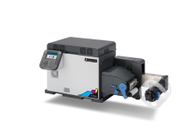Nutrition Labels Canada: How To Print Them Right?
24th Sep 2025
Key Highlights
-
Most prepackaged foods in Canada require a Nutrition Facts table and ingredient list.
-
Exemptions include fresh produce, raw meats, in-store prepared foods, and qualifying small businesses.
-
Labels must follow Health Canada rules, with bilingual text and front-of-package symbols from 2026.
-
Key compliance challenges: space, readability, bilingual layout, and evolving regulations.
-
Accurate serving sizes, clear fonts, and an organised layout ensure professional, compliant labels.
-
Top printers: Primera LX500, Afinia LT5C, Afinia L502, VIPColor VP550 for high-quality, durable labels.
-
Durafast Label provides tools, tapes, and support to print clear, compliant, and professional labels in-house.
Nutrition labels are more than numbers on a package. They are a legal requirement and a powerful tool for building customer trust. In Canada, getting them wrong can lead to compliance issues, wasted packaging costs, and frustrated buyers.
This blog will guide you through the essentials of Canadian nutrition labels, from what must be included to how they should be formatted and printed. We will also share practical tips to avoid costly errors and keep your products shelf-ready.
By the end, you will have a clear roadmap for printing nutrition labels that meet regulations and strengthen your brand's credibility in the marketplace.
What Are Nutrition Labels?
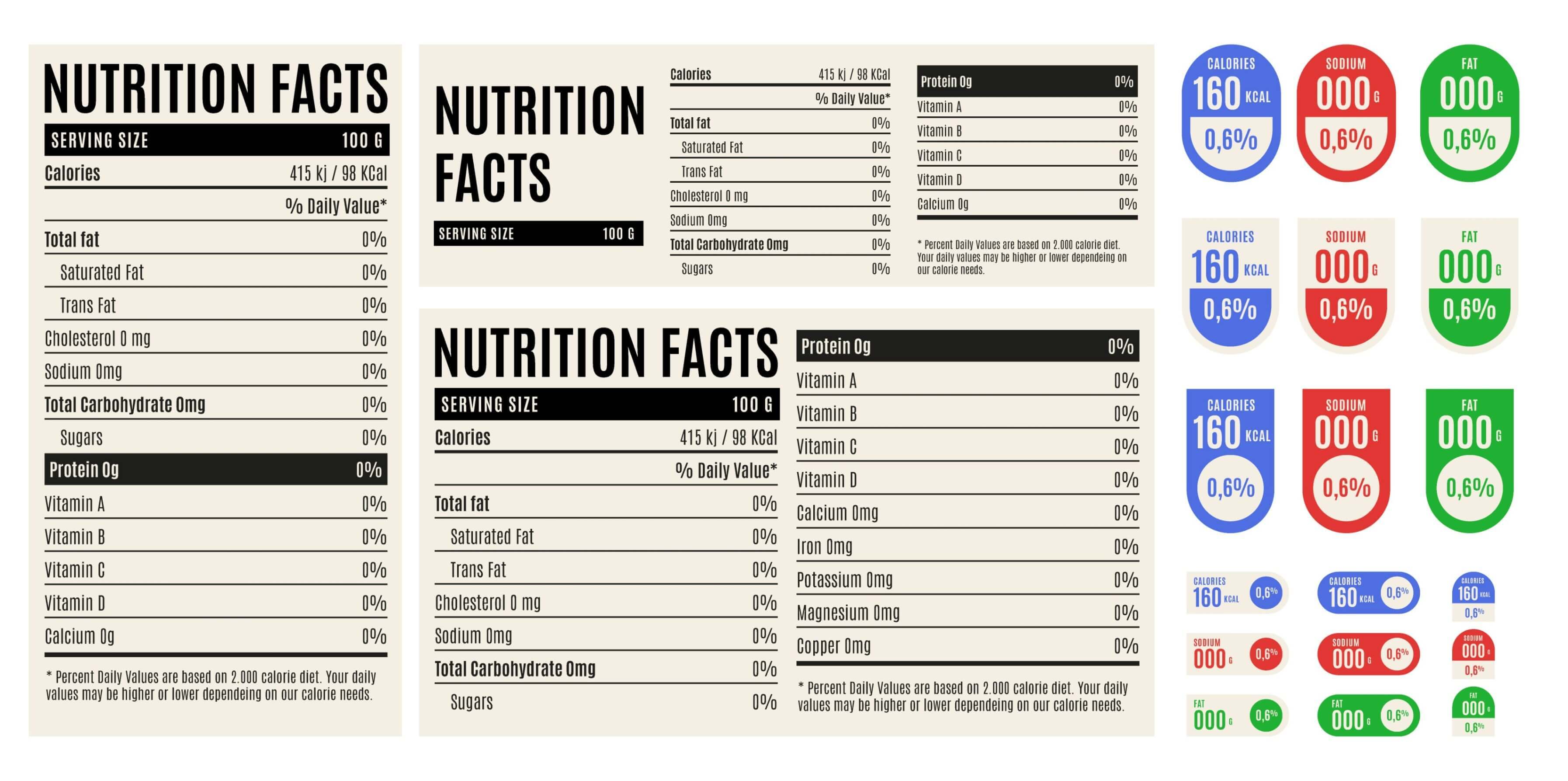
Nutrition labels are standardised panels found on prepackaged food products. They provide key nutrition information in a consistent format to help consumers understand the nutrient content, compare products, and make informed dietary choices.
To read a nutrition label, begin with the serving size since all other values are based on this amount. Then, look at the calories and the percent daily value (% DV), which indicate whether a food contains a small amount (5% or less) or a large amount (15% or more) of a nutrient.
The label also includes an ingredient list, showing all ingredients in descending order by weight. This is especially important for people managing allergies or food sensitivities.
What Are The Canadian Regulations For Nutrition Labelling?
In Canada, nutrition labelling is regulated by Health Canada under the Food and Drug Regulations. Since 2007, most prepackaged foods have been required to display precise and reliable nutrition information.
Every label must include a Nutrition Facts table and an ingredient list, while some products may also feature nutrition claims or a front-of-package symbol. Here’s a breakdown of what you’ll find:
|
Label Element |
Details |
|---|---|
|
Nutrition Facts Table |
Mandatory. Shows serving size, calories, nutrients, and % Daily Value (% DV). |
|
Ingredient List |
Mandatory. Lists all ingredients in descending order by weight. Must also highlight added sulphites, common allergens, and gluten sources. |
|
Nutrition Claims |
Optional. Highlight nutrient levels (e.g., low sodium, high in fibre) or health benefits (e.g., a diet rich in vegetables and fruit may reduce cancer risk). |
|
Front-of-Package Symbol |
Mandatory from 2026. Required on foods high in sodium, sugars, or saturated fats to help consumers make quick, informed choices. |
Who Needs to Use Nutrition Labels in Canada?
Nutrition labels are required for almost all prepackaged foods sold in Canada. This means most products on store shelves, from canned goods to cereals, must carry a clear and consistent Nutrition Facts table. The goal is to give consumers the information they need while ensuring transparency across the food industry.
However, not every food requires a label. Exemptions apply to:
-
Fresh fruits and vegetables
-
Raw single-ingredient meats and poultry
-
Foods prepared or packaged in-store, such as bakery items or deli salads
Some small businesses may also qualify for exemptions under specific conditions, helping reduce regulatory pressure. Still, it is important for food producers to verify whether their products are covered, since compliance is the rule for most foods in Canada.
To make this process simple and reliable, using high-quality label makers and durable tapes can save time and ensure your products meet the requirements every time. Explore Durafast Label's tools and supplies to make labelling effortless and professional.
Why Do Businesses Struggle With Nutrition Label Compliance?
Creating nutrition labels that meet Canadian standards comes with its share of challenges. The first is space. A label must include a Nutrition Facts table, a bilingual ingredient list, and other details, all while following strict rules for font size and layout. On smaller packages, making everything fit without losing readability can be especially difficult.
According to Health Canada, by January 2026, foods high in saturated fat, sugar, or sodium will require a front-of-package nutrition symbol. This update means many businesses will need to redesign their packaging and reprint labels to stay compliant.
The key to overcoming these challenges is smart planning, staying current with the regulations, and using reliable printing solutions.
How to Print Nutrition Labels That Meet Canadian Standards?
Creating nutrition labels that meet Canadian standards is more than a legal requirement. Here's how you can print nutrition labels that meet Canadian standards:
-
Start with the Nutrition Facts table, which must list key details like calories, saturated fat, calcium, and other core nutrients.
-
Make sure the serving size is accurate, since all other values depend on it. The ingredient list is equally important, giving shoppers the information they need to make safe and informed choices, especially when it comes to allergens.
-
Clarity matters. Using the right font size, clean layout, and bilingual text ensures your label is easy to read at a glance.
Note: Staying on top of Health Canada’s guidelines will help you avoid mistakes and keep your packaging compliant as rules evolve.
Need The Best Printer for Nutrition Labels? Check Out These 4 Top Picks
The right printer makes nutrition labels clear, compliant, and professional. High resolution, material flexibility, and cost efficiency are key. Here are four top options for printing nutrition labels:
1. Primera LX500 Color Label Printer
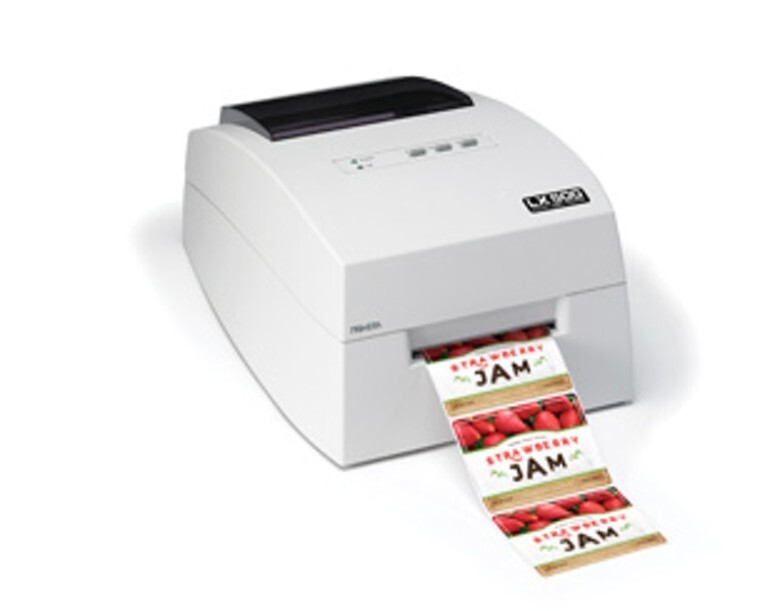
The Primera LX500 is a compact, high-resolution (4800 dpi) colour printer that delivers sharp, professional nutrition labels up to 4 inches wide. Perfect for businesses that need clear, compliant labels on demand without the hassle.
Why It Stands Out:
-
Creates eye-catching, full-colour labels with 4800 dpi clarity
-
Compact size makes it easy to fit into small workspaces
-
Handles different label types for maximum versatility
-
Simple setup and operation for quick, on-demand printing
-
Reliable performance trusted by small and growing businesses
The Primera LX500 is an excellent pick if you want professional-quality nutrition labels without compromising on ease of use.
2. Afinia LT5C CMYK+White Label Printer
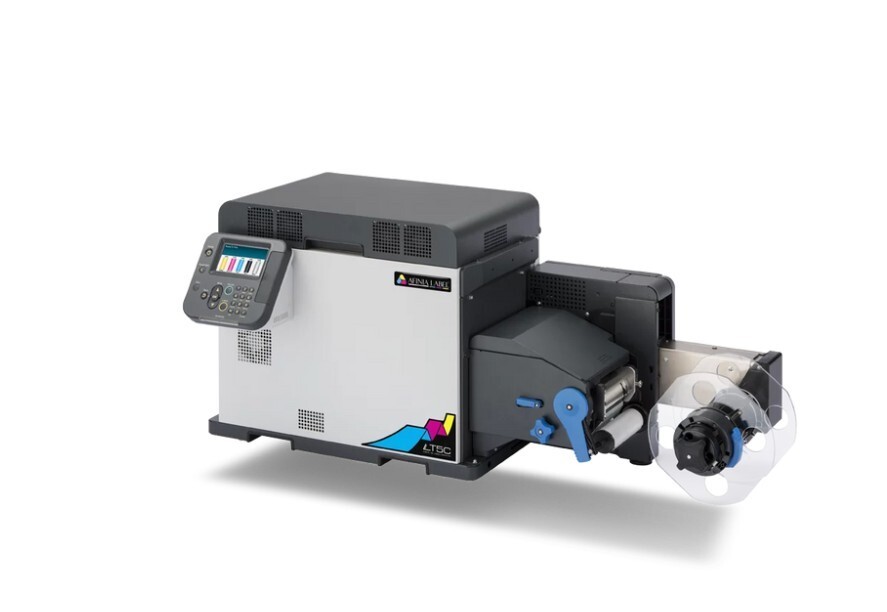
The Afinia LT5C is A five-colour (CMYK+White) printer built for high-quality, durable labels that stand out across food, beverage, and household goods. Its white toner capability makes designs pop on clear, foil, and dark media, perfect for premium packaging.
Why It Stands Out:
-
Five-colour printing (CMYK + White) for unique, high-impact labels
-
1200 x 1200 dpi resolution for crisp, professional detail
-
White toner enables standout designs on speciality materials
-
Prints are UV- and water-resistant for long-lasting durability
-
Versatile enough for food, beverage, household, and speciality goods
The Afinia LT5C is the go-to choice for those who need premium-quality labels with the flexibility to print on almost any material.
3. AFINIA L502 Colour Printer - Dye
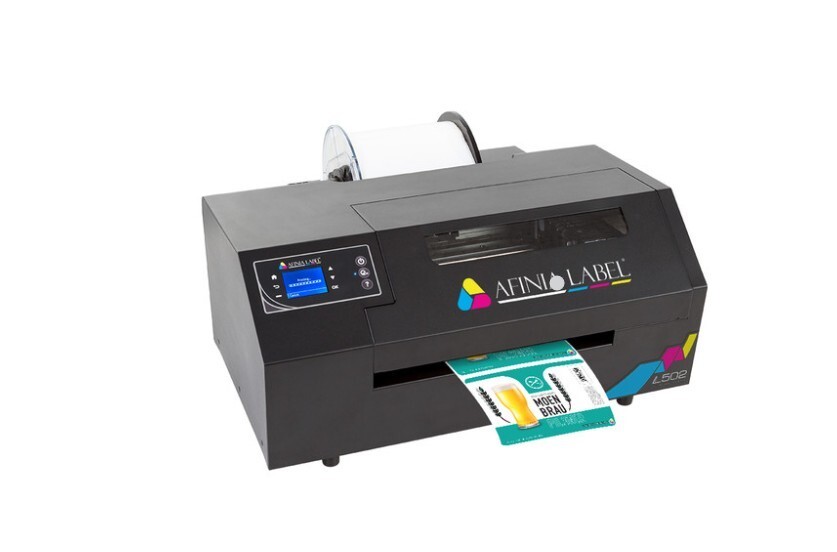
The Afinia L502 is an 8.5-inch colour label printer designed for medium print volumes (2,500–20,000 labels per month). It delivers vibrant, high-resolution labels that are ideal for customer-facing products, such as coffee, tea, and candle packaging.
Why It Stands Out:
-
Broad 8.5" print capability for larger, detailed labels
-
Produces sharp, vibrant colours with high-resolution dye inks
-
DuraPrime Duo Ink Technology lets you switch between dye and pigment inks
-
Balances vivid aesthetics with long-lasting durability
-
Ideal for businesses producing professional, compliant nutrition labels
The Afinia L502 is the versatile option for brands that want both eye-catching designs and the flexibility to handle a range of label needs.
4. VIPColor VP550 Memjet Color Label Printer - New
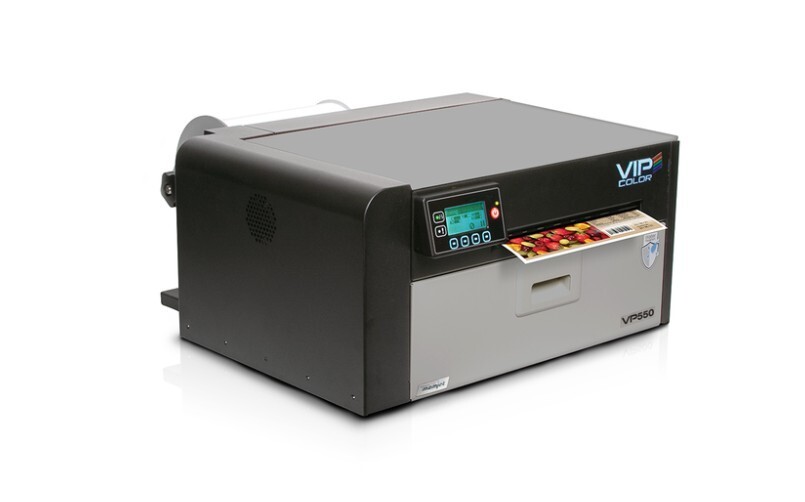
The VIPColor VP550 is a high-speed Memjet label printer that produces vibrant, full-colour labels with professional precision. Compact yet powerful, it’s built to handle high-volume runs without sacrificing sharp detail or colour accuracy.
Why It Stands Out:
-
High-speed Memjet technology for fast, efficient output
-
Produces vivid, full-colour labels with crisp detail
-
Handles a wide variety of label materials for flexibility
-
Compact design fits seamlessly into busy workspaces
-
Ideal for high-volume products, shipping, and retail labels
The VIPColor VP550 is the perfect solution for businesses that require fast, professional-quality labels on a large scale.
Looking for Smarter Label Printing? Choose DuraFast in Canada
Tired of outsourcing your labels and waiting on costly third-party printers? DuraFast Label.ca lets you take control. Buy or lease high-quality label printers and create clear, professional, and compliant labels in-house.
From barcodes and product tags to wristbands and custom packaging, DuraFast offers top brands such as Afinia, Zebra, Toshiba, and GoDEX, along with expert support to help you get started quickly. Print on your schedule, cut costs, and elevate your brand, all without compromise.
Ready to get started? Contact us today.
Final Words
Every label you print is more than just text on a package; it’s your brand speaking directly to your customer, building trust with every detail.
When done right, nutrition labels don't just inform; they inspire confidence, spark loyalty, and elevate your products above the rest. Investing in smart, compliant, and professional printing today sets the stage for lasting impact tomorrow.
Frequently Asked Questions
What information must be on a nutrition label in Canada?
A Canadian nutrition label must include a nutrition facts table showing the serving size, calories, and a percent daily value (% DV) for 13 core nutrients like fat, sodium, and carbohydrates. An ingredient list is also required, along with any allergen declarations.
Are nutrition labels mandatory for all food in Canada?
Most prepackaged foods require a nutrition label. However, the Canadian government provides exemptions for certain foods, such as fresh fruits and vegetables, raw meat, some bakery items, and alcoholic beverages. It's best to confirm if your product qualifies for an exemption.
What are the recent changes to Canadian nutrition labelling?
The most significant recent change is the introduction of a mandatory front-of-package nutrition symbol. This symbol must appear on foods high in sodium, sugars, or saturated fat to help consumers quickly identify products that may pose health risks if over-consumed. The deadline for this change is January 1, 2026.
Can small food businesses get exemptions from nutrition labels?
Yes, the Canadian government offers exemptions for smaller businesses based on factors like gross annual sales. If your business qualifies, you may not need a nutrition label on your packaging. It is essential to check the specific criteria to ensure you are compliant.
Which printer is best for printing nutrition labels in Canada?
For small or home-based businesses, the Primera LX500 and Afinia L502 are top choices for clear, professional nutrition labels. For medium to large businesses needing high-volume printing, the VIPColor VP550 and Afinia LT5C deliver fast, high-quality results.
Why is food nutrition labelling so inconsistent?
Nutrition labelling can vary due to differences in regulations, serving size standards, and ingredient reporting across products. Manufacturers may also interpret guidelines differently, leading to inconsistencies in presentation and detail.
Are there differences between Canadian and international nutrition labels?
Canadian labels follow the CFIA’s Nutrition Facts table format, including mandatory nutrients and serving sizes, while other countries may have different requirements, units, or front-of-pack labelling, making direct comparisons challenging.
Are there templates available for creating nutrition facts labels in Canada?
Health Canada and CFIA provide downloadable templates and guidance for Nutrition Facts tables, helping businesses create compliant labels quickly and accurately without starting from scratch.
What is the history of nutrition labelling rules in Canada?
Nutrition labelling in Canada began in the 1970s and evolved over the decades. The modern Nutrition Facts table became mandatory in 2005, aiming to improve transparency, standardise information, and help consumers make informed choices.
